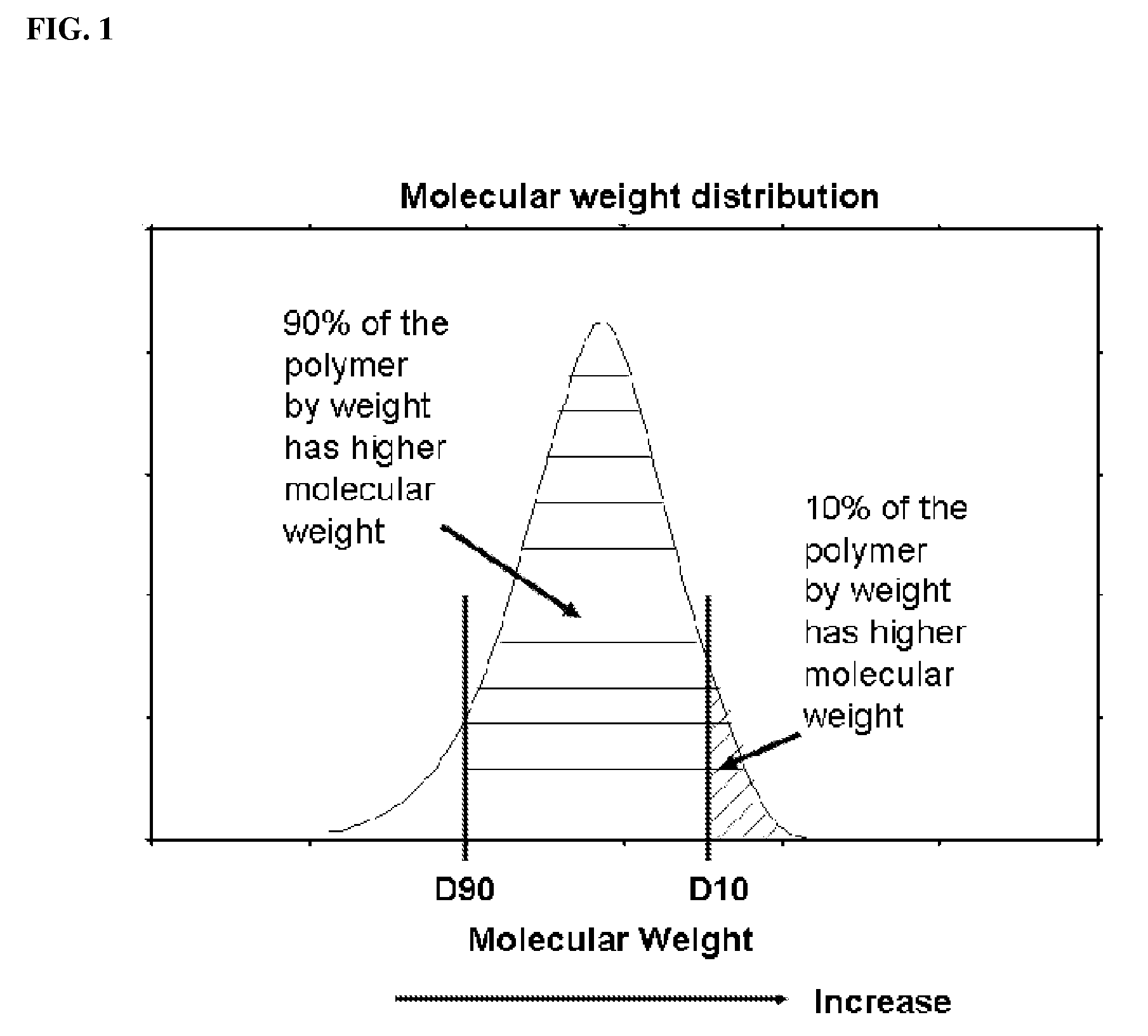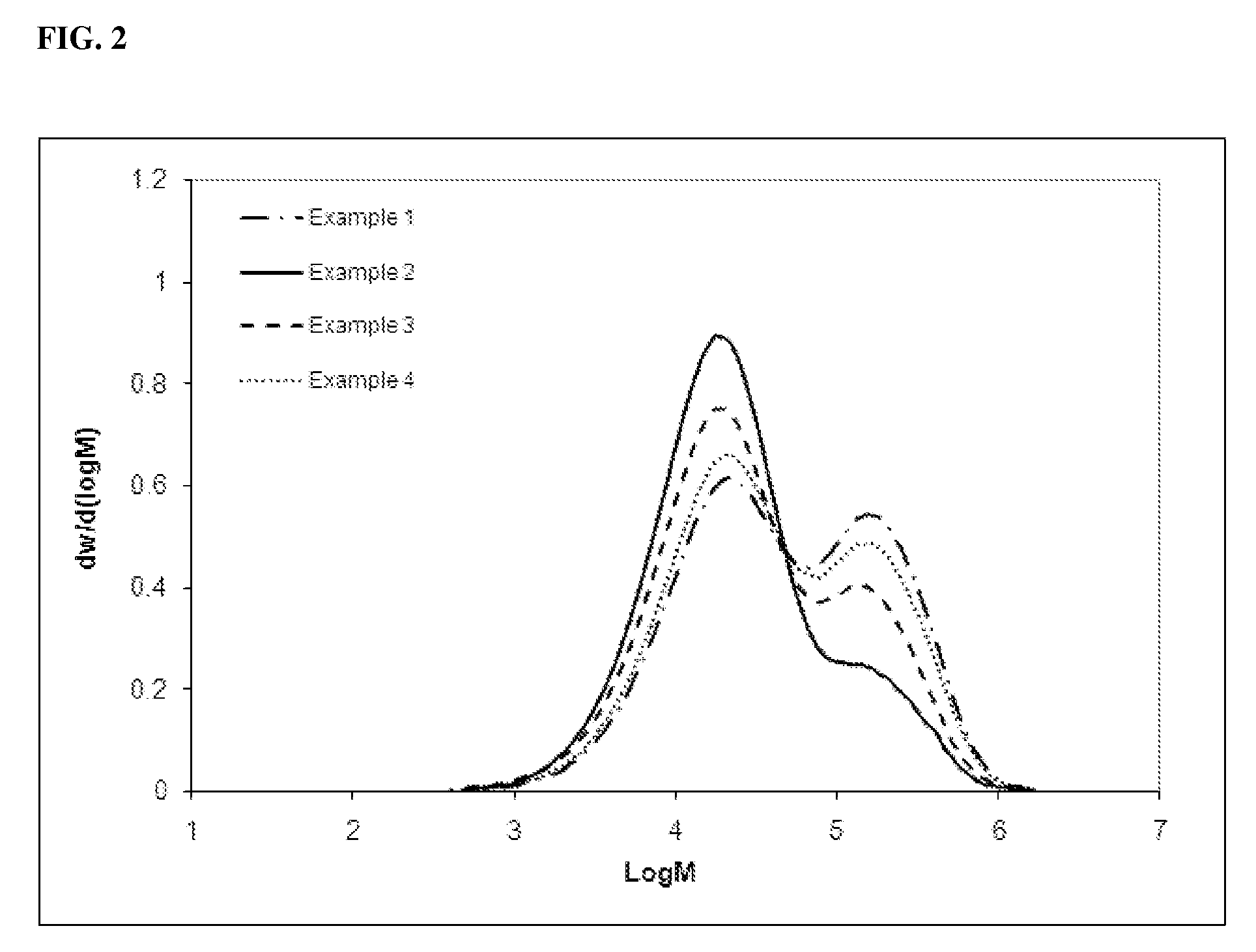Catalysts for producing broad molecular weight distribution polyolefins in the absence of added hydrogen
a technology of polyolefins and molecular weight distribution, which is applied in the field of catalysts for producing broad molecular weight distribution polyolefins in the absence of added hydrogen, and can solve problems such as adversely affecting reactor operation conditions
- Summary
- Abstract
- Description
- Claims
- Application Information
AI Technical Summary
Benefits of technology
Problems solved by technology
Method used
Image
Examples
examples
[0375]The invention is further illustrated by the following examples, which are not to be construed in any way as imposing limitations to the scope of this invention. Various other aspects, embodiments, modifications, and equivalents thereof which, after reading the description herein, may suggest themselves to one of ordinary skill in the art without departing from the spirit of the present invention or the scope of the appended claims.
[0376]Melt index (MI, g / 10 min) was determined in accordance with ASTM D1238 at 190° C. with a 2,160 gram weight.
[0377]High load melt index (HLMI, g / 10 min) was determined in accordance with ASTM D1238 at 190° C. with a 21,600 gram weight.
[0378]Polymer density was determined in grams per cubic centimeter (g / cm3) on a compression molded sample, cooled at about 15° C. per hour, and conditioned for about 40 hours at room temperature in accordance with ASTM D1505 and ASTM D1928, procedure C.
[0379]Molecular weights and molecular weight distributions were ...
examples 1-12
Polymers Produced Using a Dual Catalyst System
[0386]Catalyst component I metallocene compounds used in these examples had the following structures:
[0387]
[0388]Catalyst component II metallocene compounds used in these examples had the following structures:
[0389]
[0390]These metallocene compounds can be prepared in accordance with any suitable method. Representative techniques are described in U.S. Pat. Nos. 7,026,494, 7,199,073, 7,312,283, 7,456,243, and 7,521,572, and U.S. Patent Publication 2009 / 0088543, the disclosures of which are incorporated herein by reference in their entirety.
[0391]The polymerization conditions for Examples 1-12 are summarized in Table I, while the resultant polymer properties for Examples 1-12 are summarized in Table II. The weight ratio of catalyst components I:II in Examples 1-12 was within a range from about 4:1 to about 1:2. The Mn of the polymers of Examples 1-12 was within a range from about 11,000 to about 25,000 g / mol.
[0392]FIG. 2 illustrates the mol...
examples 13-16
Polymers Produced Using a Catalyst System Containing a Single Catalyst Component I Metallocene
[0396]The catalyst component I metallocene compound used in these examples had the following structure:
[0397]
[0398]The polymerization conditions for Examples 13-16 are summarized in Table III, while the resultant polymer properties for Examples 13-16 are summarized in Table IV. FIG. 9 illustrates the molecular weight distributions of the polymers of Examples 13-16. As shown in Tables III-IV and FIG. 9, unexpectedly, the molecular weight distributions of the polymers of Examples 13-16 were largely unaffected by the amount of hydrogen added to the reactor.
[0399]
TABLE IIIPolymerization Conditions for Examples 13-16.CatalystCatalystTimeTemperatureReactor PressureH2 / ethyleneActivator-AlkylExampleComponent IComponent II(min)(° C.)(psi)(ppm)SupportAluminum132 mg I-1None30903900100 mg SA0.3 mmol TIBA142 mg I-1None3090390100100 mg SA0.3 mmol TIBA152 mg I-1None3090390200100 mg SA0.3 mmol TIBA162 mg I...
PUM
| Property | Measurement | Unit |
|---|---|---|
| MI | aaaaa | aaaaa |
| temperature | aaaaa | aaaaa |
| temperature | aaaaa | aaaaa |
Abstract
Description
Claims
Application Information
 Login to View More
Login to View More - R&D
- Intellectual Property
- Life Sciences
- Materials
- Tech Scout
- Unparalleled Data Quality
- Higher Quality Content
- 60% Fewer Hallucinations
Browse by: Latest US Patents, China's latest patents, Technical Efficacy Thesaurus, Application Domain, Technology Topic, Popular Technical Reports.
© 2025 PatSnap. All rights reserved.Legal|Privacy policy|Modern Slavery Act Transparency Statement|Sitemap|About US| Contact US: help@patsnap.com



